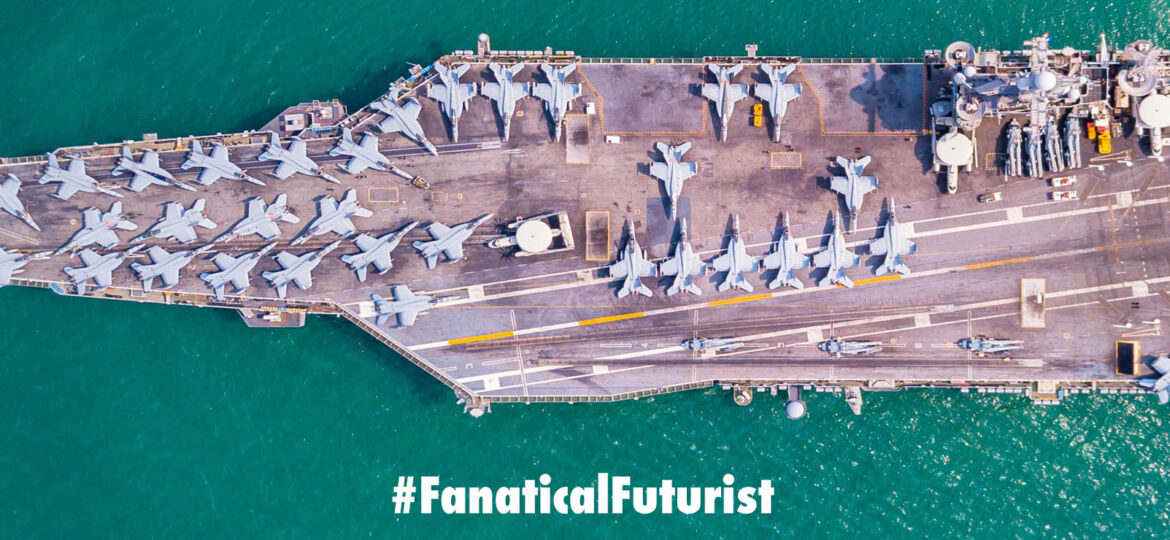
WHY THIS MATTERS IN BRIEF
The future of warfare will include drones, and that flips the idea of today’s aircraft carriers on its head.
 Interested in the Exponential Future? Connect, download a free E-Book, watch a keynote, or browse my blog.
Interested in the Exponential Future? Connect, download a free E-Book, watch a keynote, or browse my blog.
A while ago I wrote an article that discussed the impending emergence of the world’s first flying aircraft carriers, and note that I didn’t put those words in inverted commas because when we talk about the arrival of flying aircraft carriers that’s just what we mean. With the exception of course that your traditional thinking now undoubtedly has you picturing a flying ship. Now that would be daft – future flying aircraft carriers are, of course, planes that launch and capture swarms of autonomous hunter killer drones. And the US military have now announced that they’re coming soon after they green lighted several rounds of testing.
In November 2019, an old C-130A transport plane took to the skies near Salt Lake City, Utah bearing what appeared to be a hi-tech cruise missile slung under a pylon on one wing.
The Hercules then released the missile-like X-61A Gremlin Air Vehicle (GAV), an advanced military drone, which abruptly rotated stubby wings that had been tucked under its belly into flight position. A turbojet engine came to life with a flash and began trailing a plume of smoke.
Over the next 101 minutes, both air- and ground-side controllers took turns operating the 1,500-pound Gremlin’s flight control system and the drone manoeuvred itself by tilting its X-shaped tail fins, and recording telemetry transmitted by the drone’s onboard datalink.
Finally, the Gremlin engaged a drogue parachute to begin a landing and recovery cycle. But then the second main parachute failed to engage, and the X-61 slammed into the ground at high speed, destroying the prototype.
Despite not quite sticking the landing, Gremlin program officials maintain they were satisfied with the prototype’s performance in every other stage of the flight and that they were confident that the final malfunction wouldn’t impede future tests.
In fact, the next flight test due this spring will see the Gremlin attempt a more difficult task – docking with its C-130A mothership for in-flight recovery. The program eventually aims to demonstrate the capability for a Hercules to recover four Gremlins in less than thirty minutes and prove that the concept of building world’s first flying aircraft carrier platform works.
To recover a Gremlin, the mothership first deploys a “bullet” capture probe towed from the cargo bay, a system similar to the flexible mid-flight refueling probes used by the US Navy. The probe latches onto a hook that flips up from the Gremlin’s spine.
Once the X-61 has docked onto the probe, it rotates it tucks its stub wings laterally back into its belly. Then operators reel the Gremlin towards the Hercule, where they will eventually be plucked into the cargo bay by the pincers of an extendible mechanical arm.
The Gremlin was designed by tech company Dynetics and built by drone-manufacturer Kratos, with contributions by seven additional partner companies. It was the final design chosen out of four proposed to a program run by the Defense Advanced Research Projects Agency (DARPA).
















